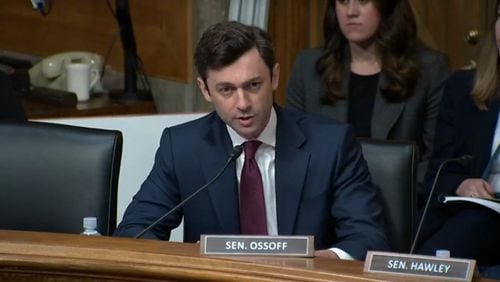It’s always tempting to look ahead to the next elections, and the results from November’s contests in New Jersey and Virginia, and special elections in Georgia and elsewhere, have our Democratic friends licking their chops about this fall’s midterms.
They’re right to be optimistic. Midterm elections are always difficult for new presidents, and the headwinds coming toward — or in some cases, from — Donald Trump and his party are quite strong.
That said, there are always “X factors” in elections. The most commonly cited variable for 2018 is the possibility of indictments coming from Robert Mueller’s investigation of the Trump campaign. But another could be a countervailing wind in the GOP’s favor: the economy.
The economy has grown by at least 3 percent for two straight quarters, only the third time that’s happened since 2004-05. That was also the last time we surpassed 3 percent growth in at least three consecutive quarters, but forecasts for the final three months of 2017 indicate the current streak might well continue.
In other words, the U.S. economy may be humming along better than at any time since George W. Bush’s first term.
This may come as a surprise to those who bought the “new normal” narrative that emerged during the Obama era, when we heard tepid growth was a fact of life for a mature economy like ours. Western Europe’s slower-growing economies were cited as apt comparisons. But trading solid growth for more government spending and regulation is not fate. We can choose otherwise.
A New York Times article earlier this week explored the renewed confidence among American businesses. The new tax cuts are one reason. But even before that, the Times noted, “capital spending had risen significantly, climbing at an annualized rate of 6.2 percent during the first three quarters of last year. Surveys of planned spending also show increases.”
How big of a deal is that? Consider that from 1960 to 2008, capital spending averaged 22.6 percent of gross domestic product. From 2009 to 2015, it was just 19.1 percent. The worst year for capital spending from 1960 to 2008 was 1992, when it reached just 20.02 percent of GDP. In the more recent period, only one year (2015, at 20.35 percent) was better than that.
A 6.2 percent increase over the lower growth of the recent past equals about 1 percent of GDP. How much higher was GDP growth from 1960-2008 than from 2010-15? About 1 percent.
Business leaders told the Times the main explanation for the burst of investment is the federal government is no longer choking them with new regulation. Under President Barack Obama, agencies issued 395 “economically significant regulations” — rules projected to cost at least $100 million annually. Under Bush it was 274; under Bill Clinton, 303.
The comparisons are instructive, but consider the cumulative effect: Since 1993, that’s almost 1,000 new regulations that each cost a minimum of $100 million a year. That’s an economic drag of at least $100 billion annually, and likely far more. Heck, the cost to the federal budget has reached $60 billion a year, more than doubling since Clinton became president, adjusted for inflation.
Trump, on the other hand, last month boasted he has cut 22 regulations for each new one. In the past year, the Times reported, “federal agencies have delayed, withdrawn or made inactive nearly 1,600 planned regulatory actions,” with more to come.
The aggregate effect of regulation is hard to pinpoint, but suffice it to say firms were tired of facing ever more rules. Now they feel freer to expand, instead of defending against new governmental encroachment.
Add their reduced tax burden starting this week, which has already led a number of companies to announce employee bonuses or raises and new investments, and the lid has been taken off the economy. If two strong quarters in a row become three, or four, or six, with strength waxing rather than waning, more Americans will be working and earning higher wages. And that could keep more Republican lawmakers employed, too.
About the Author





